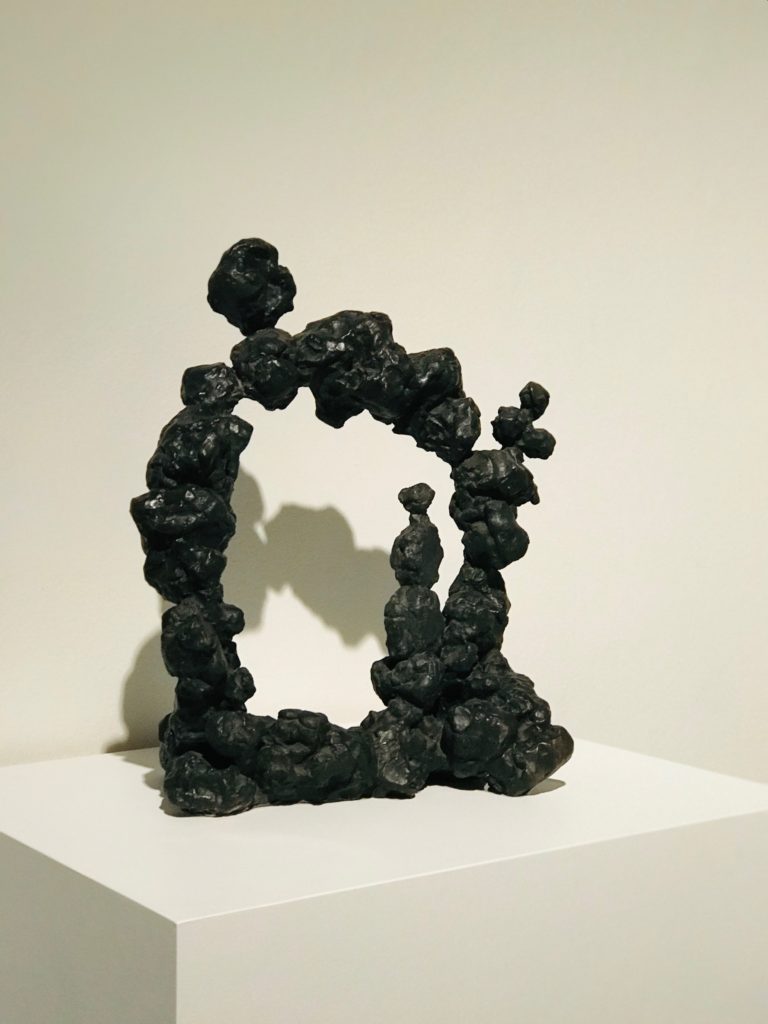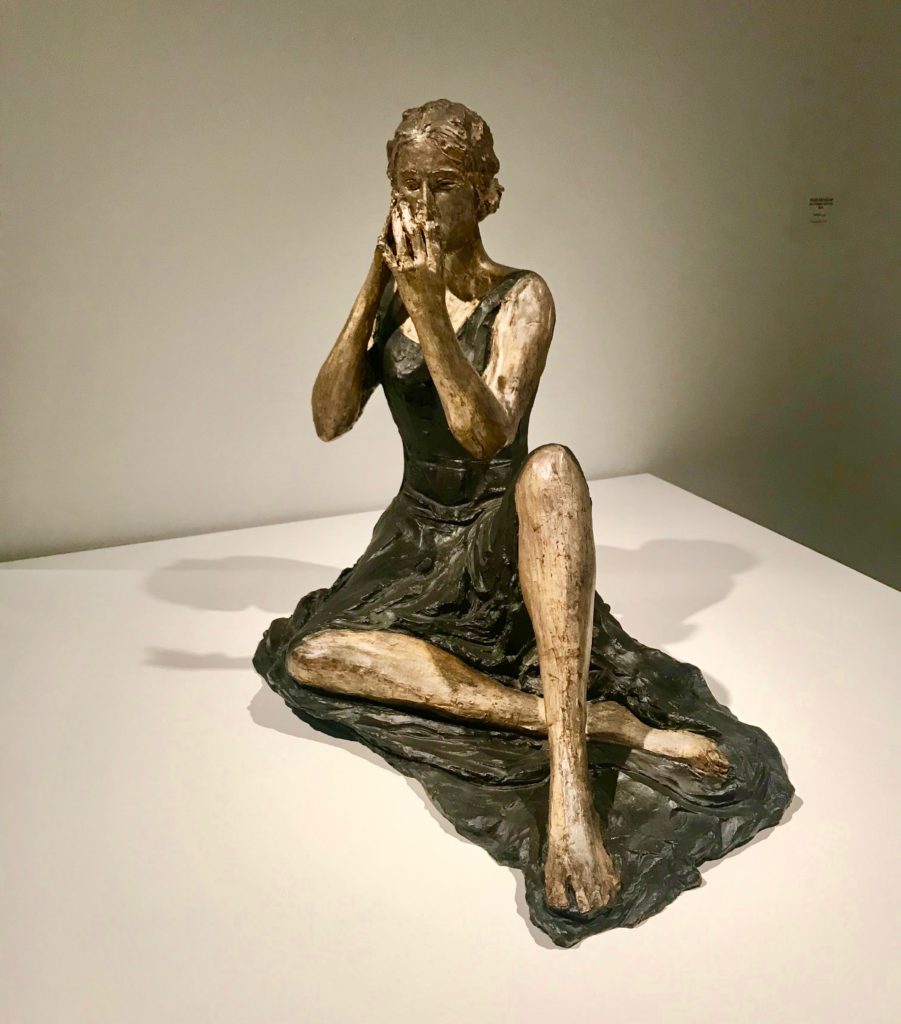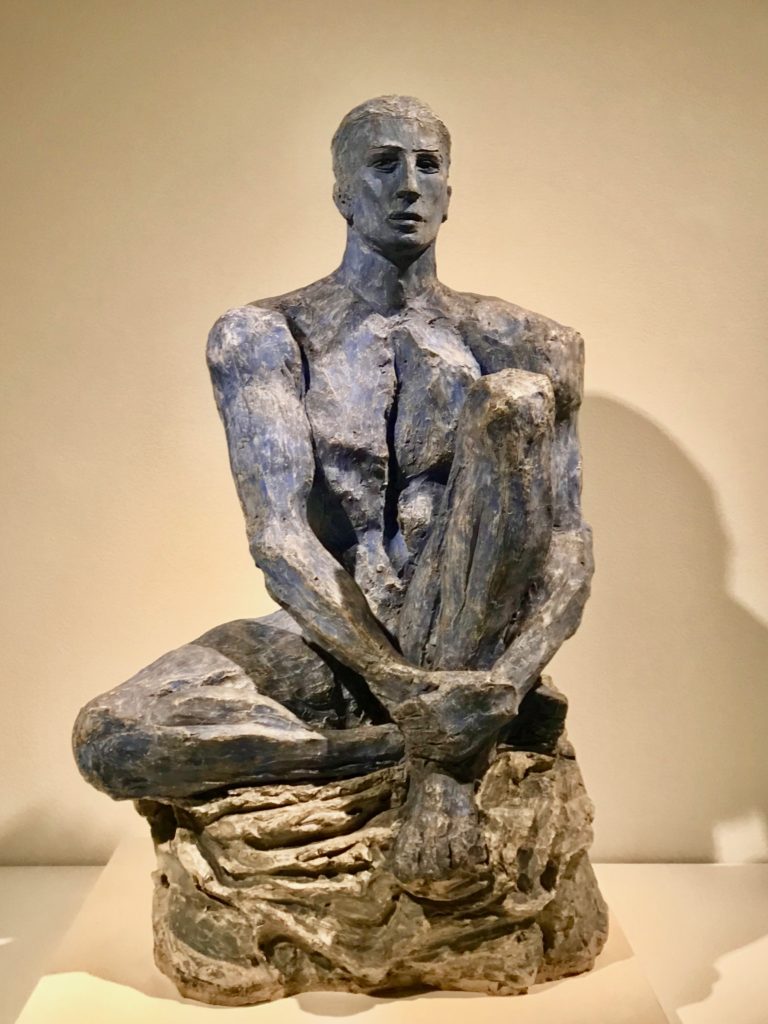
PHOTOGRAPH BY KEMI OSUKOYA / THE AFRICA BAZAAR MAGAZINE 
PHOTOGRAPH BY KEMI OSUKOYA/ THE AFRICA BAZAAR MAGAZINE 
PHOTOGRAPH BY KEMI OSUKOYA / THE AFRICA BAZAAR MAGAZINE 
PHOTOGRAPH BY KEMI OSUKOYA / THE AFRICA BAZAAR MAGAZINE
Kemi Osukoya
THE AFRICA BAZAAR MAGAZINE
January 2019
Decades long before British artist Bansky stunned the art world last October by self-destroying one of his best-known artworks, “Girl with a Ballon,” just moments after it sold at an auction in London for more than $1 million, the late Argentinian-Italian painter and sculptor Lucio Fontana had skillfully perfected puncturing and slashing knife through the surfaces of his paintings, in what can only be described a creative dichotomy.
“The urge to destroy is also a creative urge,” Spanish painter, sculptor Pablo Picasso once said. This statement pretty much sums up Fontana’s paintings, which are currently feature in a namesake exhibition, “Lucio Fontana: On the Threshold,” at the Met Breuer, in concurrent with the Metropolitan Museum of Art on Fifth Avenue and El Museo Del Barrio in New York City.
The exhibition, which runs through April 14, is the first retrospective exhibition of the artist’s work in America in 40 years, and includes more than 100 objects, spreading through the three museums.
Fontana is best known as the father of Spatialism, and for his slashed and perforated surface paintings. He pioneered the spatialism theory that touted that all art should be integrated and experience in a new dimension that’s defined by the new times, and new technologies, using shapes, canvas, and neon-lights to expand the idea of painting as a part of a broader project, and integrating the artwork within real space surrounding.
To best understand the artist’s work and what the movement is all about, it’s important to visit this exhibition with an open mind, else you might be left wondering what’s all the fuss about.
To begin with, let’s just say there’s more than meets the eyes about Fontana’s artworks.

From the moment you enter the galleries, where the sculptures and paintings are on display, there’s a great sense of intrigue about the objects in the room, especially the paintings, one that elicits a delightfully unexpected thrill of passion, adventure and discovery as you view each piece.
The monochromatic paintings, done on canvases, especially the “Cuts” series, are visually mesmerizing, and alluring in a beguiling way that hides the twisted energies of enacted violence and passion that seem to be contained in some of the paintings.
Fontana created his first “Cuts” painting in 1958 when he made the audacious radical act in modern art history at the time, cutting through the surface of one of his monochrome paintings with a knife, and shocking the art world. It was the artist’s gestural response to the mixed events taking place in the world at the time: The excitement and uncertainty of the post war era, which were accentuated by the space race between America and Russia and the looming nuclear threat of the Cold War. His “Cuts” series became a symbol of the era, highlighting the euphoria and caprices of the society.
The feeling is intangible and consequential.
After painting each canvas, Fontana takes a knife and slits through the pictorial surface of the painting to make one, or two or multiple incisions or punctured holes in order to transmit light through the canvas to create what he called a two dimension art experience.
To viewers, the slightly opened-slits in the “Cuts” paintings might resemble or call to mind an image of open wounds on a smooth skin. It’s disturbing, yet attractive in a weird way. It’s a contrast between perfection and defect that implicitly hints at regeneration of life.
Speaking of euphoria and uncertainty in the world, given the current affairs in our world: the looming threat of nuclear war, trade war between countries, the increasing polarization and populism within societies and so on and so forth, Fontana’s irrational gesture with his art during the post war era and the symbolism associated with the “Cuts” series very much resonate today.
Lucio Fontana was born in Rosario, Argentina. He spent part of his life there working with his father and the family business in the 1920s before venturing out on his own to travel to Europe. He settled in Milan, Italy, where his artistic talent and vision took off. He started his career in sculpture. While living in Argentina, Fontana mingled with Argentine avant-garde abstract artists and groups like Madi and Arte Concreto-Invencion that started abstract art in the country, which later served as foundation and inspiration for his own artistic vision.

PHOTOGRAPH BY KEMI OSUKOYA/ THE AFRICA BAZAAR MAGAZINE 
PHOTOGRAPH BY KEMI OSUKOYA/ THE AFRICA BAZAAR MAGAZINE 
PHOTOGRAPH BY KEMI OSUKOYA/ THE AFRICA BAZAAR MAGAZINE 
PHOTOGRAPH BY KEMI OSUKOYA/ THE AFRICA BAZAAR MAGAZINE 
PHOTOGRAPH BY KEMI OSUKOYA/ THE AFRICA BAZAAR MAGAZINE 
PHOTOGRAPH BY KEMI OSUKOYA/ THE AFRICA BAZAAR MAGAZINE
In 1949, at the aged of 51, he pivoted into paintings, painting for the first time on a canvas, and launched a series of perforated paintings, which he titled Spatial Concept.
Through his paintings, Fontana was pushing and breaking down what was convention, in terms of what is fine art, urging the viewer to look beyond the surface to what lies beyond.
While all art or creative work is subjective and the question of what is considered fine art is still debatable, Fontana’s artworks nudge us to look beyond and expand our idea of what is conventional art. Perhaps more importantly, he reminds us, through his own career reinvention in his middle-aged, to stay open to life and new discoveries.



